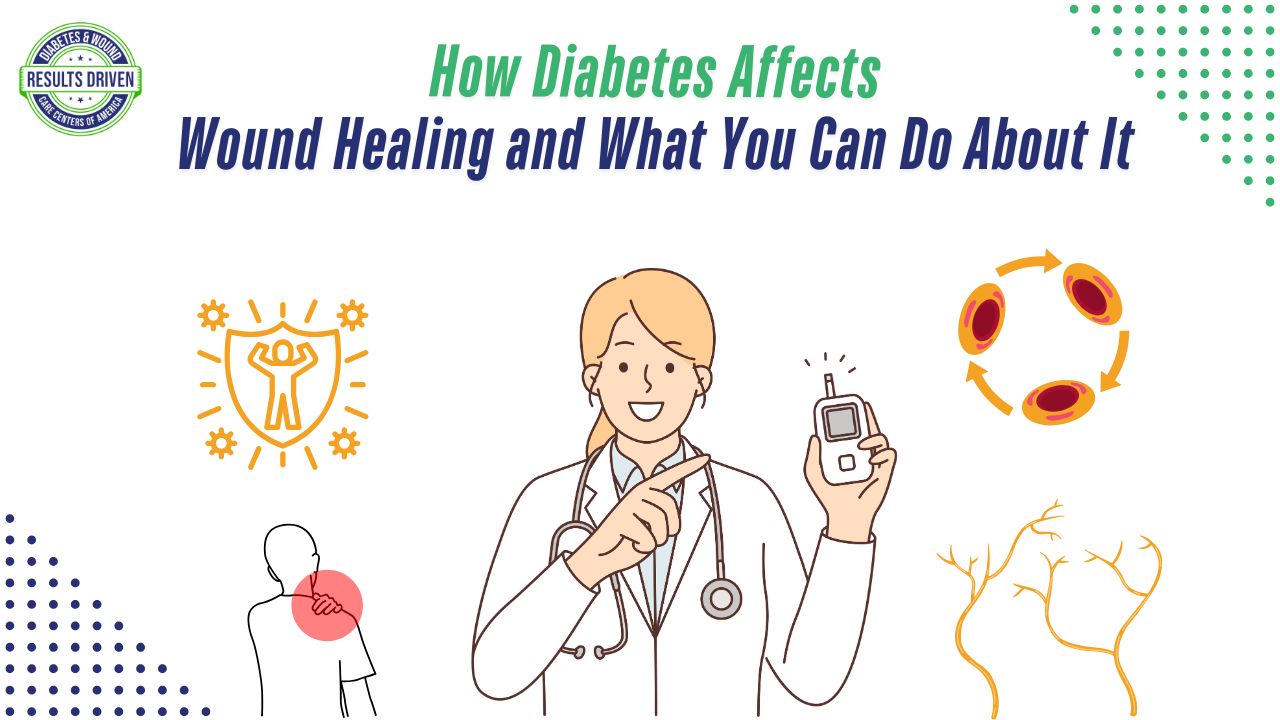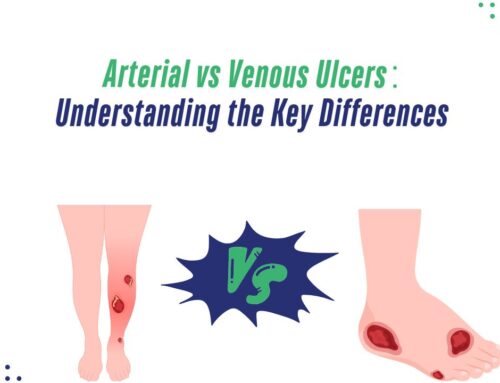How Diabetes Affects Wound Healing and What You Can Do About It
A small cut or blister might seem harmless, but for someone with diabetes, it can quickly become a serious health concern. Have you ever wondered why wounds in people with diabetes take longer to heal? Diabetes doesn’t just affect blood sugar levels—it weakens the body’s ability to heal itself, making even minor injuries a potential threat. A wound that would typically heal in days for someone without diabetes can linger for weeks or even months, increasing the risk of infection and complications. However, with the right strategies, you can take control of your healing process and prevent serious consequences. Let’s explore how diabetes impacts wound healing and the steps you can take to stay ahead of the curve.
How Diabetes Impacts Wound Healing
Reduced Blood Circulation
Diabetes can damage blood vessels, leading to reduced circulation, especially in the extremities. Poor circulation slows the delivery of oxygen and essential nutrients needed for tissue repair. Without a steady blood supply, wounds struggle to heal, and in severe cases, the affected area may develop ulcers or become necrotic, increasing the risk of amputation.
Weakened Immune System
When blood sugar levels are consistently high, the immune system’s ability to fight off infections is compromised. White blood cells, which are responsible for defending against bacteria and viruses, become less effective. This weak immune response makes people with diabetes more vulnerable to infections, which can turn a minor wound into a serious health threat if not treated promptly.
Nerve Damage (Neuropathy)
Diabetes-related nerve damage, or neuropathy, often affects the feet and lower legs. Over time, high blood sugar damages nerves, leading to reduced sensation. Without normal pain perception, individuals may not notice cuts, blisters, or pressure sores. This delay in detection allows wounds to worsen, sometimes leading to severe infections that require medical intervention.
Chronic Inflammation
Diabetes often triggers chronic inflammation, which further disrupts the body’s natural healing process. Inflammation slows the production of new tissue and increases the risk of wound complications. The prolonged inflammatory response can keep wounds open for extended periods, making them more susceptible to bacterial infections.
What You Can Do to Promote Wound Healing
Control Your Blood Sugar Levels
Maintaining blood sugar within a healthy range is critical for wound healing. High glucose levels damage blood vessels and impair immune function, making recovery slower and more complicated. Work closely with your healthcare provider to monitor your glucose levels and adjust your diabetes management plan as needed. Eating a balanced diet, staying active, and following prescribed medications or insulin therapy are essential steps in improving wound healing.
Practice Daily Foot Care
Foot care is essential for individuals with diabetes, as foot wounds can quickly become severe. Inspect your feet daily for any cuts, blisters, redness, or swelling. If you have trouble seeing the bottoms of your feet, use a mirror or ask someone for help. Keep your feet clean, dry, and moisturized, but avoid applying lotion between your toes to prevent fungal infections. Wear well-fitting shoes and diabetic socks to protect your feet from injuries caused by friction or pressure.
Clean and Protect Wounds
If you notice a cut or sore, take immediate action. Gently clean the wound with saline or clean water to remove dirt and bacteria. Avoid using hydrogen peroxide or alcohol, as they can irritate and slow healing. Apply doctor-recommended wound dressings that maintain a moist healing environment and protect against infection. Keeping wounds covered reduces exposure to bacteria and promotes faster recovery.
Eat a Balanced Diet
Your body needs proper nutrition to heal wounds efficiently. A diet rich in protein, vitamins C and A, and zinc supports tissue repair and strengthens the immune system. Lean meats, fish, eggs, nuts, seeds, and dairy products provide the necessary building blocks for cell regeneration. Additionally, staying hydrated helps improve circulation and ensures that nutrients reach the affected areas.
Improve Circulation
Good circulation is essential for delivering oxygen and nutrients to wounds. Engage in regular physical activity, such as walking or light stretching, to improve blood flow. However, always check your feet before and after exercise to prevent unnoticed injuries. Avoid smoking, as it constricts blood vessels and further reduces circulation. Managing blood pressure and cholesterol levels also helps keep blood vessels healthy and improves overall wound healing.
Seek Professional Care
If a wound doesn’t show signs of improvement within a few days, consult a healthcare provider or wound care specialist. Some wounds may require advanced treatments such as negative pressure wound therapy, hyperbaric oxygen therapy, or skin grafts to accelerate healing. Early intervention is key to preventing severe complications, so don’t wait until the wound worsens before seeking medical attention.
When to Be Extra Cautious
For people with diabetes, even small wounds should be treated seriously. Delaying care can lead to infections, ulcers, and potentially life-threatening complications. Seek immediate medical attention if you notice:
- Increased redness, swelling, or warmth around the wound, as these may indicate infection.
- Pus, foul odor, or discharge coming from the wound.
- Persistent pain or slow healing despite proper wound care.
- Blackened or discolored skin around the wound, which may signal tissue death.
Taking Charge of Your Healing
Diabetes may pose challenges to wound healing, but with proactive care, you can minimize risks and promote recovery. The key to managing wounds effectively lies in controlling blood sugar levels, practicing proper wound care, and seeking timely medical intervention when necessary. By making these steps part of your routine, you can significantly improve your body’s ability to heal and prevent minor injuries from turning into serious complications.
Don’t let diabetes slow you down—stay vigilant, take action, and equip yourself with the knowledge and care needed to protect your health. A small wound doesn’t have to become a major issue if you respond quickly and effectively. Your health is in your hands, and with the right care, you can heal and thrive.







